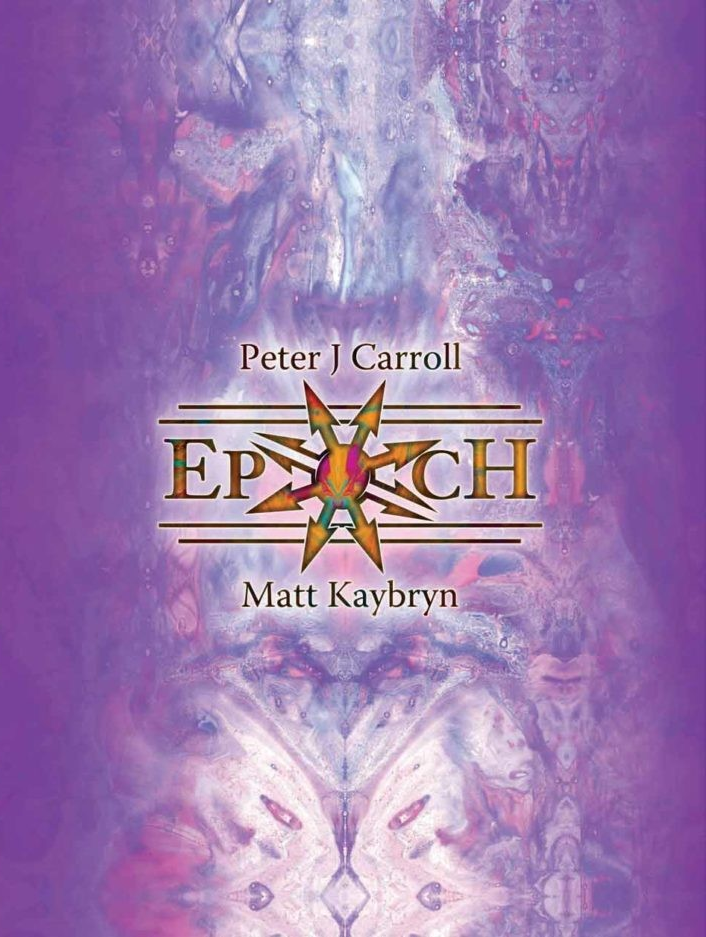
The Epoch – Hardbound Book (New Edition)
Plus Portals of Chaos Deck
By Peter Carroll and Matt Kaybryn


The Epoch – Hardbound Book (New Edition)
Plus Portals of Chaos Deck
By Peter Carroll and Matt Kaybryn

Shape-Shifters & Their Stories
Michael Berman
Format: Softcover/192 pp, 24 fascinating Illustrations.
ISBN: 978-1-906958-66-4
£15.00 / US$24.00
Subjects: Folklore//Myths & Magic/Fairy Tales/Shamanism/Spirituality.
Click HERE for Shape-Shifters & Their Stories / USA
Click HERE for Shape-Shifters & Their Stories / UK
“Long ago the trees thought they were really people
Long ago the mountains thought they were really people
Long ago the animals thought they were really people
Someday, they will say
Long ago the humans thought they were really people”
Constance O’Day-Flannery, Shifting Love
Shape-shifting is a common theme in mythology, folklore, and fairy tales. In its broadest sense, shape-shifting occurs when a being (usually human) either (1) can change its shape into that of another person, creature, or other entity or (2) finds its shape involuntarily changed by someone else. If the shape change is voluntary, its cause may be an act of will, a magic word or magic words, a potion, or a magic object. If the change is involuntary, its cause may be a curse or spell, a wizard’s or magician’s or fairy’s help, a deity’s will, a temporal change such as a full Moon or nightfall, love, or death. The transformation may or may not be purposeful.
The desire to be different in some way to match some ideal promoted through advertising has become an obsession, especially for vulnerable younger members of society. Perhaps the pressure to conform to some unrealistic ideal has always been with us, but surely not to the extent that now is the case. And it is this desire that helps to account for the current interest in shape-shifting as it would seem to provide a means of achieving the goal to bring about change. However, as many of the tales in this collection show, it is only by coming to terms with who we are that peace of mind can truly be ours again.
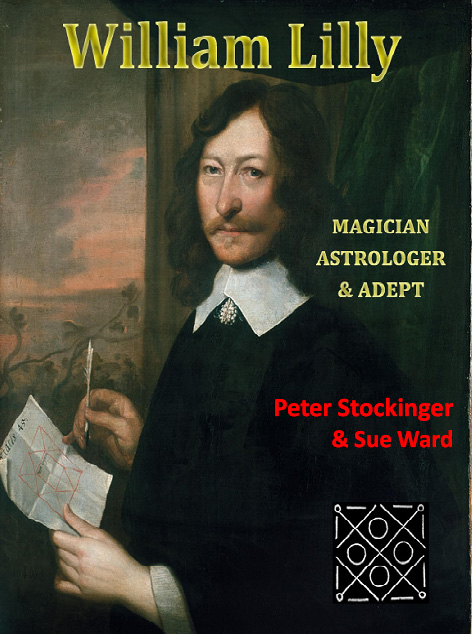
William Lilly,
Magician, Astrologer & Adept
Peter Stockinger & Sue Ward
Click HERE for the UK edition
Click HERE for USA & Elsewhere
Born less than a year before the death of Queen Elizabeth I in 1603, William Lilly lived during one of the most turbulent times in English history. Like so many of his generation, he had to deal with the plague, was drawn into the madness of the English Civil War and was forced to take sides, and witnessed the regicide of King Charles I. Lilly lived in a time of enormous religious and social upheaval, but his astrology remained the outer expression of a magical world-view, based on hermetic and neo-Platonic principles and rooted in the 16th century.
This book provides the reader with a thorough introduction to the world of William Lilly, the famous 17th century astrologer and magician. It brings together transcripts of his autobiography and of some of his most important works. It also includes Peter Stockinger and Sue Ward’s Monster of Ingratitude, an investigative journey offering new insights into the notorious contention between Lilly and the astrologer John Gadbury. Amongst other valuable information, the book contains:
* The Life of William Lilly, Student in Astrology
* Monster of Ingratitude
This research contains brief biographies of Lilly and Gadbury. It shows how their enmity began, developed and ended, including details of the rather one-sided pamphlet war. An in-depth study of published material, timelines and bibliographic entries of all primary sources used are also included and provide the grounds for a different explanation from that commonly proposed.
”The Last Magician is a very worthwhile work. Although some parts are hard going for the non-specialist, others are of value to anyone with an interest in Enlightenment esotericism and seventeenth-century English history in general. — Clive Prince.”
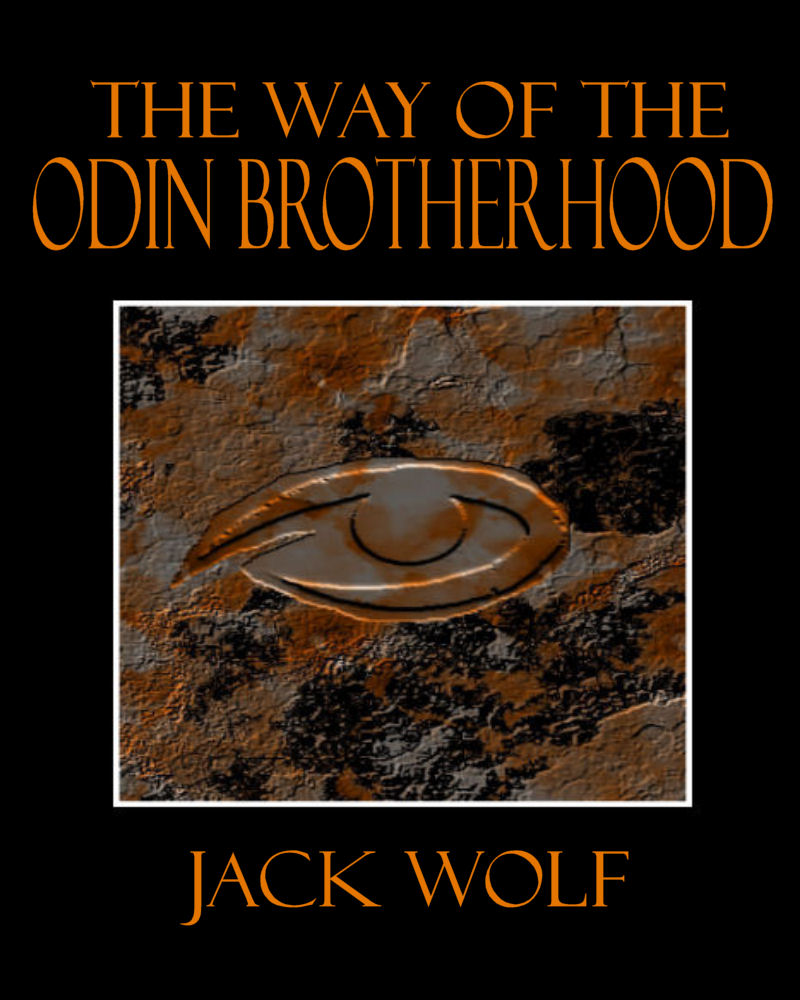
The Way of The Odin Brotherhood
Jack Wolf
Format: Softcover
ISBN: 978-1-906958-53-4
£15.00 / US$24.00
Subjects: Northern Tradition/Odinism/Secret Societies/Non-Fiction Account.
Click HERE for USA & AUS
Click HERE for UK
Click here for Kindle UK edition
Click here for Kindle USA edition
‘Would you know more?’
It began with a simple question, sent from an unknown e-mail address, and it kindled the fires of a quest that would take him on a journey of discovery spanning several years; a journey that would lead him closer to the enigmatic secret society known as the Odin Brotherhood.
Continuing a quest for understanding which had been started by his mentor years earlier, and following a trail of cryptic clues and mysterious lore, Canadian author Jack Wolf set out on a journey into the workings of this largely undocumented secret society. Accompanied by a mysterious informant known only as Crow, he embarks on a series of adventures that will ultimately draw him closer to penetrating the history, lore and secrets of this elder pagan fraternity – an entity which has existed for nearly six hundred years.
Dr Mark Mirabello’s Foreword to Jack Wolf’s The Way of the Odin Brotherhood
“I have sometimes wondered if it were possible that unrecognized forces of the past or present– or even the future– work through the thoughts and actions of living men.”
– Robert E. Howard, December 14, 1933
Mysteries have always intrigued me.
For example, Vallalar, also known as Ramalinga Adigal, disappeared from his one-room residence in Mettukuppam, India on January 30, 1874. After he had given his last and most famous lecture on the “nature of the powers that lie beyond us and move us,” he locked himself into his home and told his followers never to open the door. He said anyone entering would find nothing.
Vallalar’s seclusion generated rumours, and the British Government finally forced the door in May. They found an empty room and no clues. The facts were reported in the Madras District Gazetteer.
In my own life, I have experienced the enigma of the Odin Brotherhood. This secret society, composed of men and women who use darkness and stealth to preserve the lore of old gods and the purity of old ways, thrives on mystery.
Who are they? Why are they here? Why does legend surround their origin?
No one really knows the answers to such questions, but it is clear that anyone who encounters the Brotherhood is never the same. Life has many moments of transformation–as an elderly Ethiopian woman once said to Leo Viktor Frobenius (1873 – 1938), the fabled scholar, when a woman is deflowered, or when a pubescent boy undergoes the ordeal of circumcision, each is changed forever–but when men and women encounter the Odin Brotherhood, they are transfigured.
Since publishing my little work on the Odin Brotherhood—in 1992—my contacts with the arcane have increased in number. I have been contacted by an alleged time traveller, I have been visited by a woman claiming to be from Odin, I have received cryptic verses (postmarked from Frankfurt, Germany) supposedly written by Odin himself, and I have been offered membership in a French suicide cult, I have been asked to help with an exorcism of an adolescent deaf girl, and I have been visited by a traumatized woman who claimed to be a refugee from a subterranean world where humans are “bred like cattle and hunted like rabbits.” The list is extensive.
My hope was to be invited to join the Academy of Secrets, founded by Giambattista Della Porta (1535? – 1615) and open only to those who had made important discoveries, but that has not yet happened.
Are any or all of these contacts connected to the Odin Brotherhood? As a believer in the process that Professor Karl Jung called “synchronicity,” or “meaningful coincidences,” I think that they are.
I cannot prove the linkage, but I do know that by publishing my slender book I did meet Jack Wolf. A Canadian, an acolyte of E. Max Hyatt, and an associate of Cassie Strong, a magician, Jack Wolf is the man who crafted the volume that you now hold.
And now, as my life has changed, so shall his.
After remaining hidden for so long, why is information on the Odin Brotherhood now emerging? Members still keep their involvement secret, but why is their “ancient lore” now appearing in books, articles, videos, and Internet sites?
Perhaps, as our civilization dies, we are being offered a “beacon of light.”
Many historians date the decline of the West from World War I, and is it a coincidence that weeks before the war, on July 20, 1914, that modern humans rediscovered Trois-Frères?
Used for 20,000 years as a religious site, this huge labyrinth, reached in total darkness via a narrow passage—only one foot high and 120 feet long—was dedicated to the old gods of Europe, when man hunted savage beasts, dressed in rawhide, and huddled around open fires.
Perhaps, in this time of distress, the old gods and goddesses from the era of the “Ice” are stirring once more.
And, they are using Jack Wolf to help us.
Mark Mirabello, PhD.
Year 591 of the Odin Brotherhood
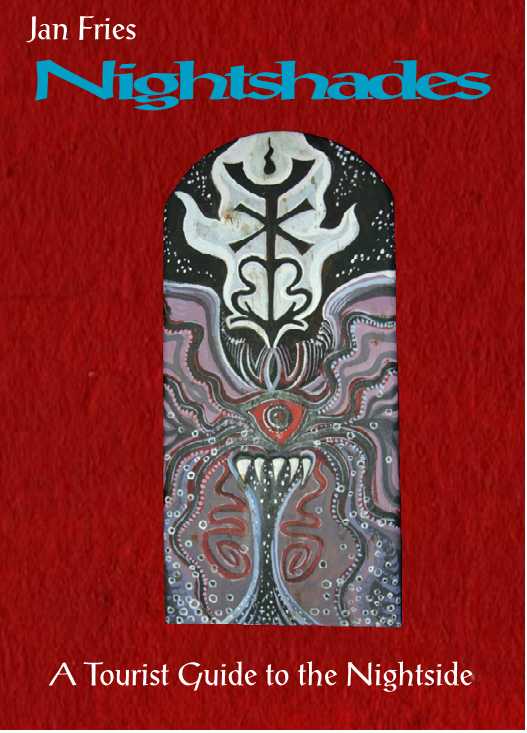
Nightshades
A Tourist Guide to the Nightside
Jan Fries
Format: Hardback – Cased Matt Laminate A4 216 pp.
ISBN: 978-1-906958-45-9
£24/US$40
Subjects: Aleister Crowley & Thelema/Kenneth Grant/Typhonian Magick/Occult Art.
“Nightshades is the record of one remarkable magician’s exploration of the inverse regions of the Tree of Life. Aleister Crowley’s Liber 231 provides the map and Kenneth Grant’s Nightside of Eden a travelogue. “Liber 231, apparently started life as a text within the Hermetic Order of the Golden Dawn, as an exercise to develop astral and trance abilities or perhaps in other more elaborate rites. The nightside aspect requires some care and alertness in case of accident. The correct attitude is said to be one of self or ego-less witness. Or maybe it’s just one needs the use of an all-embracing rather than a limited kind of identity and self-identification” (mmm)
“The Nightside is always with us. It’s so much older than the Dayside. Before the light began to shine, the night was there. Some assume that we are dealing with a simple polarity. On one hand the radiant world of colours and forms, more or less thinkable, reasonable and meaningful. Like the pretty picture of the Tree of Life it has its scenic cites, its hotels, restaurants, shopping opportunities and highways in between.
On the other hand the chaotic world of uncertain and incomprehensible mysteries. Both of them connected by the voidness that makes them possible. It looks symmetrical. But when you reach the Nightside it doesn’t work like that. The Nightside is not simply a reflection of the dayside with a few confusing and spooky bits thrown in.
The Dayside is a tiny island of experience in a huge ocean, the Nightside, full of currents, island chains and continents of the possible and impossible. All and Nothing are present everywhere. Our island is not the opposite of the world-ocean, it is simply a tiny and comprehensible part of it.” (jf)
Jan Fries Nightshades comprises 72 intense drawings prefaced by an explanatory essay detailing the background and genesis of this ultimate magical adventure.
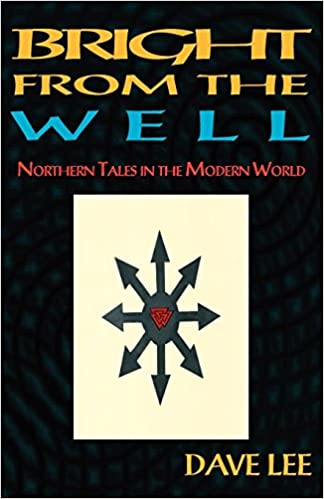
Bright from The Well
Northern Tales in The Modern World
Dave Lee
Format: Softcover
ISBN: 978-1869928841
£15.00/ US$22.00
Subjects: Northern Tradition/Chaos Magick.
Click Here for Bright from The Well / USA
Click Here for Bright from The Well / UK
REVIEWS
Attentive readers might have noticed me banging on about the collective & individual fading of memory, & the need to imagine an alternative language to talk about radical social change, entailing a re-memberance, or putting together of scattered parts strewn over a landscape of fragments.
Into my hands recently came a new book by Dave Lee, Bright from the Well – Northern Tales in the Modern World. Mandrake of Oxford (2008). It’s a retelling & reimagining of the creation & social origin myths of the Northern European tradition, including the Völuspá, & Rigsþula (Rig’s Tale). Comprising five short stories & five essays, it’s an odd but compelling read, combining a reworked & updated phenomenology of the myths with vividly told stories set in the contemporary world of would-be sorcerers & Chaos Magic.
Those with a suspicious turn of mind wrongly might detect a whiff of the Thule Society, & the romantic/reactionary projects dreamed up by the likes of W. B. Yeats & D. H. Lawrence, which often resulted in psychosomatic afflictions of the right arm. But Dave Lee is no New Ager, sharing my view that these are people with too many easily acquired beliefs to spend, who couldn’t think their way out of a paper bag. Think rather of the imaginative legacy & radical engagement of William Blake. Great stuff, ideas sparking off in all directions.
Klaus Bubblehammer, Bubblehammerblog
bubblehammerblog.blogspot.com/2008/11/recommended-reading.html
–
Bright From The Well
– Northern Tales in the Modern World
by Dave Lee
Review by Akashanath
A common difficulty for magicians moving from one tradition to another is reductio ad nauseum. With little effort, it is easy to nail the symbolism of one’s latest trip onto the pre-existing crucifix of one’s earlier experiences, eventually reducing every opportunity for novelty to a stale repeat of one’s preconceptions. Chaos Magick has often fallen into this trap, its dogma of ‘non-dogmatism’ leading adherents to strip belief-systems to their ‘essentials’, sometimes to the point where they lose much of their beauty and function. At the opposite extreme one can simply be overwhelmed by the strangeness and unfamiliarity of a new world-view, and fail to find a point from which to begin one’s assimilation. The Norse and Saxon myths, with their fragmented, archaic language and almost prehistoric themes, can often evoke this type of response. In his newest book, Dave Lee lithely navigates the pass between these twin peaks, taking time to pause and explore the dilemmas, or muse on them in the form of short fables. People expecting a book about the runes will not be disappointed. Those hoping for further expositions on the subject(s) of Chaos Magick will find plenty of interest. But for me where Bright From The Well comes into its own is as a series of reflections on dilemmas that will be familiar to many 21st century occultists.
For example, Chapter 5 is entitled “The Magician In and Against The World.” It’s essentially an analysis of the twin functions of the magician as anarchist, challenging the false autocracy of consensus reality, and the magician as priest, strengthening social traditions by helping the laity to connect them to their spiritual and cosmic sources. Within his complex analysis, Dave grapples with magicians’ tendencies towards transcendence on the one hand and immanence on the other. This rang loud bells for me; in my magickal quest I have often lurched from mind-bending hedonism to ruthless ascetic austerity and back again, struggling to marry my hungers and drives with some arbitrary construct of ultimate purpose. Dave also concludes that some sort of unification is necessary, describing this in terms of the intermarriage of the Vanir and the Aesir, the two Northern pantheons who exchange hostages somewhere near the beginning of time. Dave’s exegesis interprets the former as gods of immanence and the latter as deities of transcendence and consciousness (though not exclusively so). In a story from Snorri’s Prose Edda, Dave tells us how the Aesir (in the form of Odin) and the Vanir (in the form of Tyr) trick the Fenriswoolf (primal chaos) into allowing itself to be bound, creating the ordered universe that is a necessary precondition for human society and hence both esoteric and exoteric religious practice.
Students of Tantrika may find parallels here, and indeed Dave makes passing reference to the left and right hand paths. In many contemporary Hindu icons the transcendent Shiva is depicted sitting on his mountain, meditating and smoking Ganja, largely disinterested in the world. One myth tells us how the goddess Kali once went on a killing spree. Initially invoked by men seeking support in their war with the demons, Kali has lost sight of her original intention in an orgy of destruction. With all the demons slain, she turns her unstoppable fury on her former allies, slaughtering them with her many arms. Summoned from his mountain, Shiva is intrigued. Lying in front of her with his c**k erect, he looks up, turned on by her warped face and blood-stained body. Gradually her lust for killing turns into a different kind of lust, and the two deities begin to f**k. Separate from one another, they are aimless, functionless. In unity, Siva (transcendence) gains the capacity to manifest in the physical world, while Kali (immanence) transmutes her destructive power to generative.
Some of the other sections completely obviate the need for parallels by speaking directly to the magician’s experience. In Chapter 7, the author recounts a fascinating and credible list of magickal anecdotes spanning over 20 (and perhaps closer to 30?) years of workings, grouped into a rough typology of function. Several chapters take the form of stories, some obviously derived from Nordic originals, others less so. The style is engaging and entertaining, not laboriously educational or annoyingly whimsical, and each is short enough to be knocked off quickly (or omitted altogether) should it not be to the reader’s taste.
As well as re-telling stories from the northern traditions and presenting a novel method of working with the entities described as dwarves, the book contains a complete rune poem in English. Although it probably wouldn’t stand alone as a manual of rune magick, anyone genuinely interested in the subject could probably learn something new. The main strength, for those interested in Nordic traditions, will probably be for those looking for another perspective from which to triangulate dry, historical academic texts on the one hand and the often pedantic dogmatism of modern Odinists on the other. Overall, as the title implies, the collection is refreshing and inspired. Well worth a read!
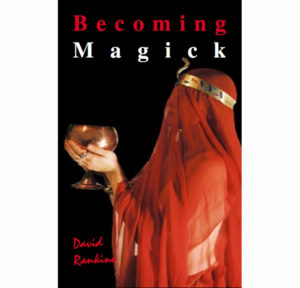
Becoming Magick / UK / £15.00+p&p
Becoming Magick / USA / US $22+P&P
Becoming Magick
New & Revised Magicks for the New Aeon
David Rankine
Format: Softcover
ISBN:
£15.00 /US $22
Subjects: Magick/Occult
–
Drawing on over twenty years of magickal work in a variety of systems, this book is a forward-looking manual full of new material and techniques created to push the boundaries of contemporary magick. Inspired by the great magickal traditions of past millennia, Becoming Magick presents new techniques of sigilisation and gematria, as well as a new system of energy magick based on the lunar Kalas, and prime Qabalah, a new system of English gematria.
REVIEWS
In the acknowledgements to this book David Rankine writes:
‘Ian Read, for being the first person to publish my writings as Jack Dracula in Chaos International.‘It is, therefore, the least we can do to have a gander at Becoming Magick and give you our considered opinion thereon. The system put forward here has something for everyone, all explained in the free and easy way that is one of the few good things about modern literature. The reader is guided through anything and (just about) everything from Maat to Angle and Mantra Webs and from Qabalah to Grant’s take on the Kalas, and it all somehow adds to- gether to make a great whole. There is a fair bit of number working in this book but anyone but the worst idiot (surely not present in the occult world?) should be able to follow this. This book is of particular use to Chaos Magicians because it is formed from ideas and techniques lifted from so many diverse systems. Definitely worth buying.’
– Frank Erpel, Chaos International, 26
‘The author of this new work exploring “magicks for the New Aeon”, is well known on the esoteric scene in Wales and London for his lectures and workshops. He has also been involved with a wide variety of magical groups and he draws on this experience to convey the essence of practical magick in simple terms. The book presents new techniques of visualisation and germatria, as well as a new system of magical working based on lunar symbolism and the Cabbala.’- The Cauldron
‘This book is a wonderful propellant for those who wish to bring that magic with a K into their lives. Having the benefit of knowledge of many systems of magic, from kundalini to kameas and kalas to qabalah, Mr Rankine delivers hard and fast ideas regarding these and a myriad of other subjects…An instructive book, especially for those with pre-knowledge of the author’s chosen subject matter.’- Hyena, Witchcraft & Wicca Magazine, Beltane to Lammas 2005
MORE REVIEWS
‘David Rankine has been practicing magick for 25 years. His book Magick Without Peers was the handbook for his correspondence course on Progressive Witchcraft, a hands on primer. This book continues in the same vein, giving you some further study in some material that Mr. Rankine has developed over and above conventional practices. This book assumes you have some grounding in basic magical practices. It would be a good to have some idea of what the Hebrew alphabet has to do with the Qabalah, and how it works with gematria, or better yet, have an idea of what gematria is. It would also be a good idea to know a little about thought forms, a touch of Magic Squares, advanced mantras, and maybe some basics in the 9 Gates.
From these foundations David Rankine takes us a step further, exposing us to some out of the box thinking on these particular essentials to basic magic practice, and gives us something to ponder and possibly incorporate into our own practices. He also includes some “found” techniques he has devised from his own ponderings and practices, and he explains those rather well. Some topics of interest include The Prime Qabalah, The Kalas, The Mantra of Becoming, Magickal Ingestion, Magick Squares and so much more. There is much to digest here, and I am going to give but a brief overview. The Prime Qabalah is a look at a variation of gematria (Hebrew Numerology) applied to the English alphabet and using the 26 prime numbers. Mr. Rankine has some interesting results, which give one cause for reflection. Well worth checking out.
The Kalas chapter is interesting, being based on the concept given by Kenneth Grant. Mr. Rankine has developed his own 16 Kalas (five elements and eleven Astrological Planets) and gives all the properties and attributions of each. From his explanation of what the Kalas are (cycles of energy), to the explanation of each Kala, he presents us with an extraordinary new working that many will find fascinating. If you work with Kalas, you will want to check this section out. The Mantra of Becoming is a discovery of Mr. Rankine, incorporating a root mantra of Kia with some variations that progress on the magical “ia” and incorporates the next four Hebrew letters: L, M, N, and S. This revelation yields some very interesting analysis from the gematria aspect of the mantra, and Mr. Rankine goes a bit further to show the relationships suggested by the gematria analysis and gives us a very interesting mantra to work with.
Magickal Ingestion I found so basic that I wondered why someone else had not thought of it before. In Egyptian, Heka is magic. It is the spoken word that makes magic manifest. The ancient Egyptians would take a spell, and write it on a piece of papyrus and dissolve it in beer and drink it, imbibing the spell as part of themselves as well as being a working.
Bringing that into the present, writing our working, or sigal, or spell on food, writing our intent on a magical cookie, writing blessings on the cakes for ritual with various methods would be an excellent idea to bring the magic and the magician closer together, as suggested by Mr. Rankine. He gives some ideas, some uses and a whole new insight into “you are what you eat”. Much to ponder here and discover.
Magick Squares are the basis for much of our magical workings, be it talismans or creating sigals for personal work. The squares are based on the astrological information from hundreds of years ago and include Saturn, Jupiter, Mars, Sun, Venus, Mercury and the moon. However, since the discovery of Uranus, Neptune and Pluto, there has been no one who has updated these squares. Mr. Rankine gives us his version of the squares using the Prime Qabalah and also includes Earth, which seems to have been neglected by the astrologers of the past.
Again, more interesting material to ponder over, chew up, and possibly incorporate into our own magical workings. Note that if you do not understand the material discussed here, it is because this book is not a basic primer, and you are not at fault. This can get to be very deep, covering some more advanced material and concepts that knowledgeable practitioners will understand. I found this to be refreshing, and a bit challenging, as there was material here that went beyond my own basic knowledge.
I love a book that can teach me something new, or send me out looking for the basics so I can kick my own working knowledge up a notch. Mr. Rankine did an excellent job of explaining the concepts he is suggesting, and includes illustrations for much of what he discusses, and but for a few places where I had no working knowledge of what he was discussing, I did follow most of what he wrote. And after a bit of backtracking and research, the material I was not familiar with did fall into place.
The mark of a good teacher is his ability to make the unfamiliar understandable, and Mr. Rankine succeeded. If you are looking for new material for your own practice, if you are looking at what other working magicians are doing and are interested in some new concepts and ideas. If you want to challenge yourself with some new aspects to the magickal practices, then this book will definitely give you something to chew on. Again, this is not a magic 101 book, but is intended for those who have gone beyond that. This book is a wondrous look at another man’s discoveries and practices.’
– Boudica, The Wiccan/Pagan Times
—
David Rankine – Magician, Esoteric Author & Researcher and a leading authority on grimoires. davidrankine.wordpress.com